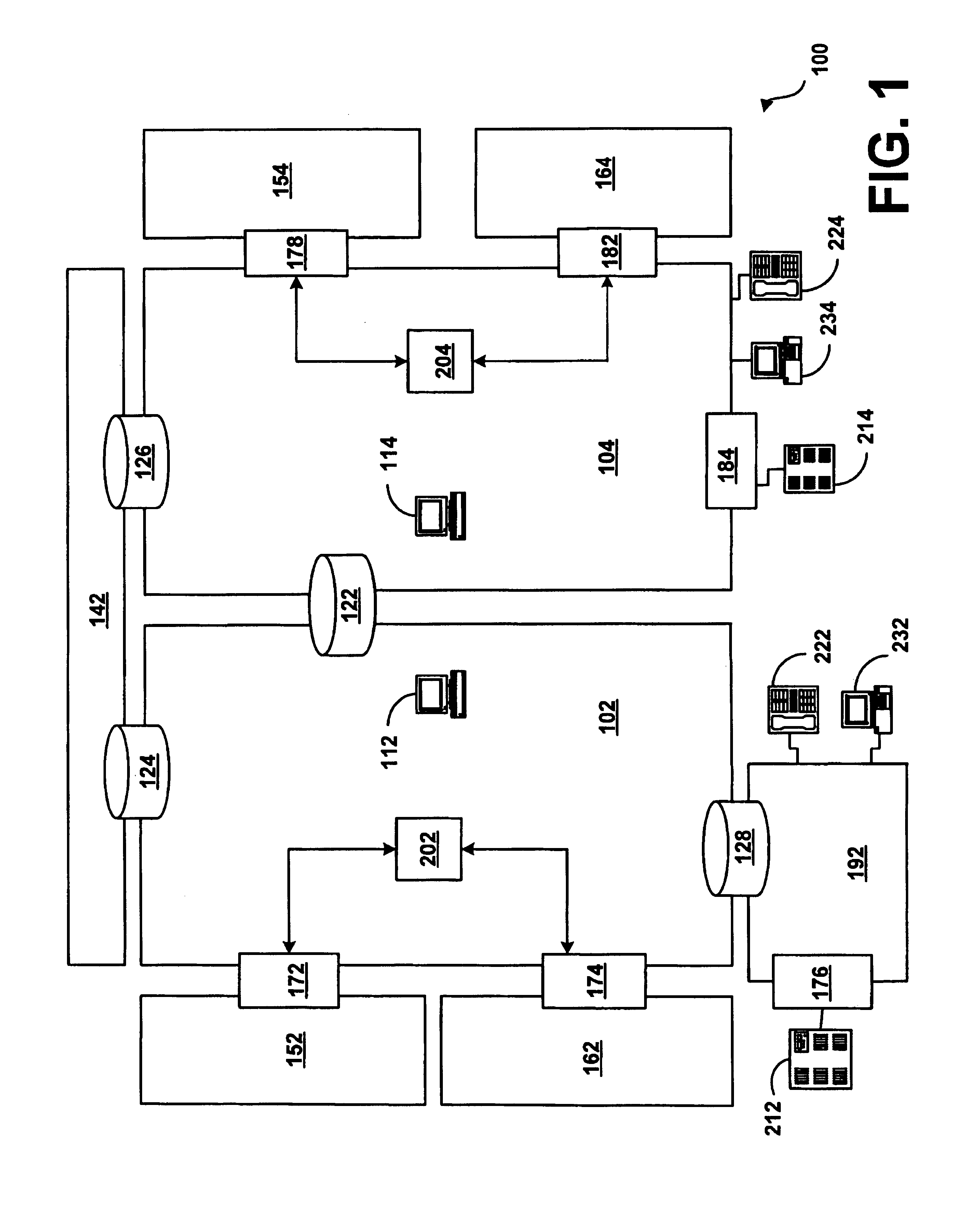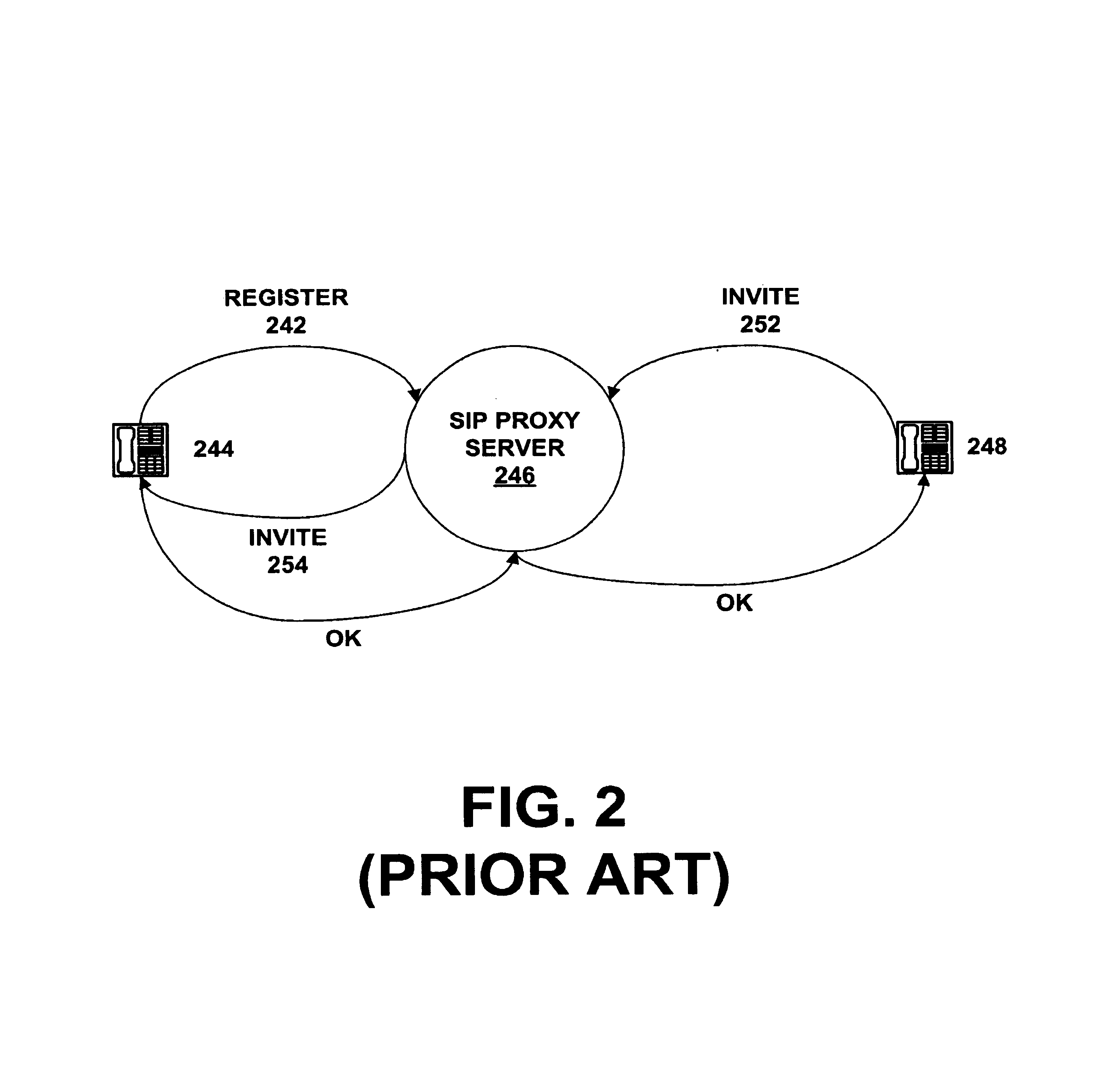System and method for assisting in controlling real-time transport protocol flow through multiple networks via media flow routing
a real-time transport protocol and routing technology, applied in the field of telecommunication networks, can solve the problems of not being able to assist in finding a proper transportation route, not being able to route an actual communication session on anything, and difficulty in changing the underlying addressing
- Summary
- Abstract
- Description
- Claims
- Application Information
AI Technical Summary
Benefits of technology
Problems solved by technology
Method used
Image
Examples
example
[0736]Gateway 1: 10-session limit; Cumulative Sessions: 10
[0737]Gateway 2: 20-session limit; Cumulative Sessions: 30
[0738]Gateway 3: 15-session limit; Cumulative Sessions: 45
[0739]In accordance with the above example, the above-described process continues, until all of the SIP agent(s) in the list have been added to the cumulative list. SIP agent(s) that appear more than once are counted as many times as they are present. The maximum cumulative session number is preferably the cumulative sessions attributed to the last SIP agent in the list. A random number between one and the maximum cumulative session number is chosen. In the example provided above, this is a random number from one to forty-five, with each possible number having equal probability. For one through ten, gateway one is chosen; for eleven through thirty, gateway two is chosen; and for thirty-one through forty-five, gateway three is chosen.
[0740]The above mentioned process provides a proportional distribution based on ...
PUM
 Login to View More
Login to View More Abstract
Description
Claims
Application Information
 Login to View More
Login to View More - R&D
- Intellectual Property
- Life Sciences
- Materials
- Tech Scout
- Unparalleled Data Quality
- Higher Quality Content
- 60% Fewer Hallucinations
Browse by: Latest US Patents, China's latest patents, Technical Efficacy Thesaurus, Application Domain, Technology Topic, Popular Technical Reports.
© 2025 PatSnap. All rights reserved.Legal|Privacy policy|Modern Slavery Act Transparency Statement|Sitemap|About US| Contact US: help@patsnap.com



